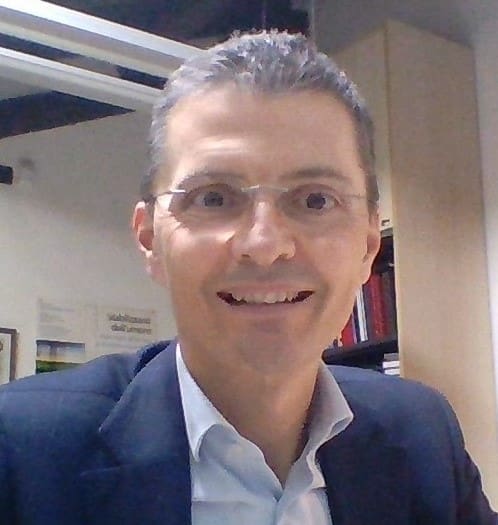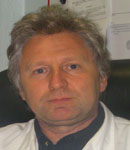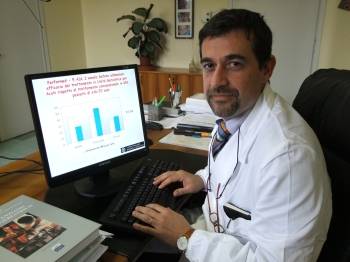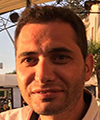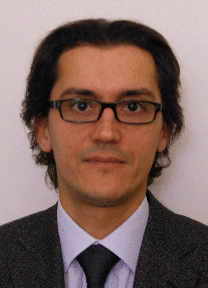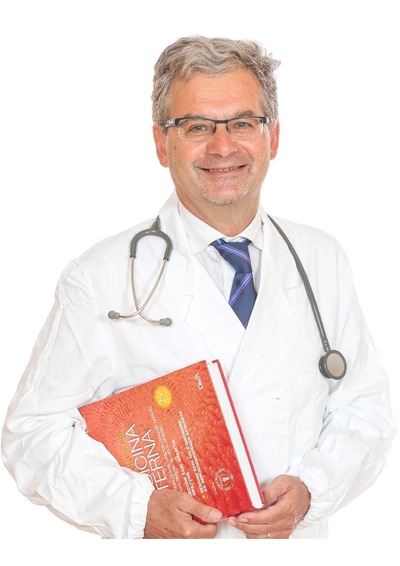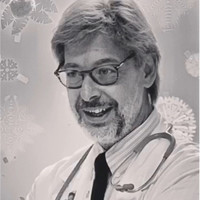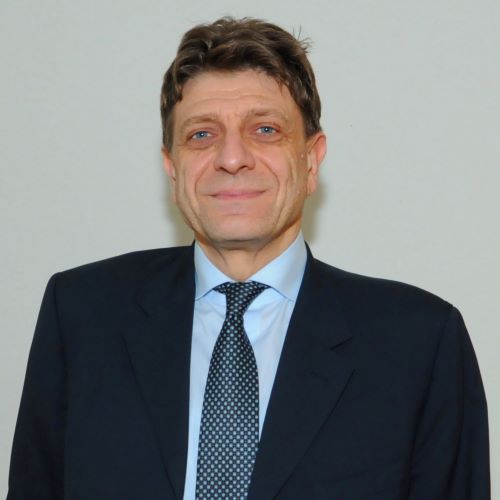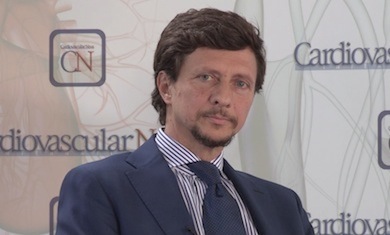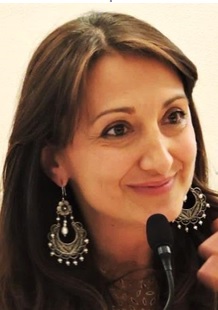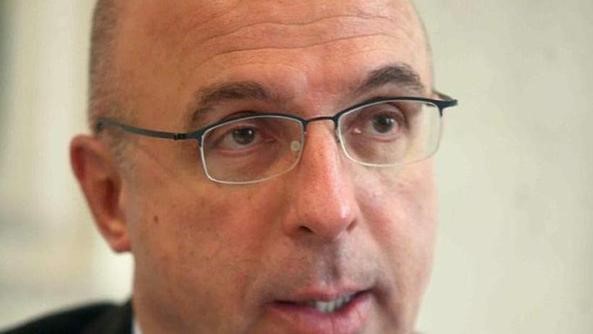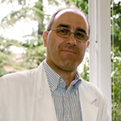Studying at the University of Verona
Here you can find information on the organisational aspects of the Programme, lecture timetables, learning activities and useful contact details for your time at the University, from enrolment to graduation.
Academic calendar
The academic calendar shows the deadlines and scheduled events that are relevant to students, teaching and technical-administrative staff of the University. Public holidays and University closures are also indicated. The academic year normally begins on 1 October each year and ends on 30 September of the following year.
Course calendar
The Academic Calendar sets out the degree programme lecture and exam timetables, as well as the relevant university closure dates..
| Period | From | To |
|---|---|---|
| INF VR - 1° anno 1° sem | Oct 3, 2017 | Dec 21, 2017 |
| INF VR - 2° anno 1° sem | Oct 3, 2017 | Dec 21, 2017 |
| INF VR - 3° anno 1° sem | Oct 18, 2017 | Dec 21, 2017 |
| INF VR - 3° anno 2° sem | Feb 1, 2018 | Mar 28, 2018 |
| INF VR - 1° anno 2° sem | Feb 1, 2018 | Apr 6, 2018 |
| INF VR - 2° anno 2° sem | Apr 16, 2018 | Jun 15, 2018 |
| Session | From | To |
|---|---|---|
| INF VR- sessione invernale 1-3 anno | Jan 8, 2018 | Jan 31, 2018 |
| INF VR- sessione invernale 2 anno | Jan 8, 2018 | Jan 29, 2018 |
| INF VR- sessione estiva 1 anno (1^parte) | Apr 9, 2018 | Apr 20, 2018 |
| INF VR- sessione estiva 2 anno | Jun 25, 2018 | Jul 18, 2018 |
| INF VR- sessione estiva 3 anno | Jul 9, 2018 | Jul 31, 2018 |
| VR- sessione estiva 1 anno (2^parte) | Jul 18, 2018 | Jul 31, 2018 |
| VR- sessione autunnale 1-2-3 anno | Sep 3, 2018 | Sep 28, 2018 |
| Session | From | To |
|---|---|---|
| 1^ SESSIONE | Oct 1, 2018 | Nov 30, 2018 |
| 2^ SESSIONE | Mar 1, 2019 | Apr 30, 2019 |
| Period | From | To |
|---|---|---|
| All Saints Day | Nov 1, 2017 | Nov 1, 2017 |
| Festa Immacolata Concezione | Dec 8, 2017 | Dec 8, 2017 |
| Vacanze natalizie | Dec 22, 2017 | Jan 7, 2018 |
| Easter break | Mar 30, 2018 | Apr 3, 2018 |
| Liberation Day | Apr 25, 2018 | Apr 25, 2018 |
| Patron Saint Day | May 21, 2018 | May 21, 2018 |
| Republic Day | Jun 2, 2018 | Jun 2, 2018 |
| Description | Period | From | To |
|---|---|---|---|
| INF VR 2° anno 1^ esp | INF VR 2° anno 1^ esp | Jan 30, 2018 | Mar 28, 2018 |
| INF VR 3° anno 1^ esp | INF VR 3° anno 1^ esp | Apr 4, 2018 | May 18, 2018 |
| INF VR 1° anno 1^ esp | INF VR 1° anno 1^ esp | Apr 23, 2018 | Feb 1, 2018 |
| INF VR 3° anno 2^ esp | INF VR 3° anno 2^ esp | May 28, 2018 | Jul 6, 2018 |
| INF VR 1° anno 2^ esp | INF VR 1° anno 2^ esp | Jun 11, 2018 | Jul 17, 2018 |
| INF VR 2° anno 2^ esp | INF VR 2° anno 2^ esp | Sep 3, 2018 | Oct 12, 2018 |
| INF VR 3° anno 3^ esp | INF VR 3° anno 3^ esp | Sep 10, 2018 | Oct 19, 2018 |
Exam calendar
Exam dates and rounds are managed by the relevant Medicine Teaching and Student Services Unit.
To view all the exam sessions available, please use the Exam dashboard on ESSE3.
If you forgot your login details or have problems logging in, please contact the relevant IT HelpDesk, or check the login details recovery web page.
Should you have any doubts or questions, please check the Enrollment FAQs
Academic staff
 elisabetta.allegrini@aovr.veneto.it
elisabetta.allegrini@aovr.veneto.it
Arici Cecilia
 cecilia.arici@univr.it
cecilia.arici@univr.it
 + 39 045 812 8266
+ 39 045 812 8266
 assunta.biasi@univr.it
assunta.biasi@univr.it
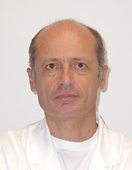
Bisoffi Zeno
 zeno.bisoffi@sacrocuore.it
zeno.bisoffi@sacrocuore.it
 +390456013326
+390456013326
 luisa.bissoli@mail.azosp.vr.it
luisa.bissoli@mail.azosp.vr.it
 federica.bonato@aor.veneto.it
federica.bonato@aor.veneto.it
Cunico Laura
 laura.cunico@univr.it
laura.cunico@univr.it
 0444752922
0444752922
 stefania.danese@univr.it
stefania.danese@univr.it
 francesca.defanti@univr.it
francesca.defanti@univr.it
 stefano.detogni@univr.it
stefano.detogni@univr.it
Leonardelli Paola
 laura.messina@univr.it
laura.messina@univr.it
 045 8122124
045 8122124
 fpecoraro@ospedalepederzoli.it
fpecoraro@ospedalepederzoli.it
 nicola.pelizzari@univr.it
nicola.pelizzari@univr.it
 sara.pilotto@univr.it
sara.pilotto@univr.it
 zenogabriele.poli@univr.it
zenogabriele.poli@univr.it
 er.vedovi@virgilio.it
er.vedovi@virgilio.it
 elisabetta.veronese@aovr.veneto.it
elisabetta.veronese@aovr.veneto.it
 tamara.zerman@univr.it
tamara.zerman@univr.it
 lzivelonghi@aulss9.veneto.it
lzivelonghi@aulss9.veneto.it
Study Plan
The Study Plan includes all modules, teaching and learning activities that each student will need to undertake during their time at the University.
Please select your Study Plan based on your enrollment year.
1° Year
| Modules | Credits | TAF | SSD |
|---|
Pathophysiology applied at Nursing
Biomolecular fondamentals of life
Morphological and functional fundamentals of life
General and methodological nursing
Health and safety promotion
English for Nursing
Clinical practice (1st year)
2° Year activated in the A.Y. 2018/2019
| Modules | Credits | TAF | SSD |
|---|
Application of diagnostic and therapeutic processes
Chronic clinical nursing care
Clinical nursing care in surgical area
Clinical nursing care in medical area
Relationship in nursing care
Clinical practice (2nd year)
3° Year activated in the A.Y. 2019/2020
| Modules | Credits | TAF | SSD |
|---|
Maternal and paediatric nursing care
Critical nursing care
Evidence based nursing
Health organizations and care processes
Legal, bioethic and deontological principles of professional practice
| Modules | Credits | TAF | SSD |
|---|
Pathophysiology applied at Nursing
Biomolecular fondamentals of life
Morphological and functional fundamentals of life
General and methodological nursing
Health and safety promotion
English for Nursing
Clinical practice (1st year)
| Modules | Credits | TAF | SSD |
|---|
Application of diagnostic and therapeutic processes
Chronic clinical nursing care
Clinical nursing care in surgical area
Clinical nursing care in medical area
Relationship in nursing care
Clinical practice (2nd year)
| Modules | Credits | TAF | SSD |
|---|
Maternal and paediatric nursing care
Critical nursing care
Evidence based nursing
Health organizations and care processes
Legal, bioethic and deontological principles of professional practice
Legend | Type of training activity (TTA)
TAF (Type of Educational Activity) All courses and activities are classified into different types of educational activities, indicated by a letter.
Clinical nursing care in medical area [Matricole pari] (2018/2019)
The teaching is organized as follows:
Learning outcomes
------------------------
MM: MALATTIE CARDIOVASCOLARI
------------------------
To provide the basis of the principal cardiovascular diseases, their clinical presentation and diagnostic methods.
------------------------
MM: INFERMIERISTICA CLINICA MEDICA
------------------------
The teaching focuses on chronical diseased patient’s caring, in stability and instability phases (hearth deficit, IMA and angina, BPCO and asthma). The approach considers caring contents and modalities aiming at activate particular self-caring behaviors, considering that most of chronical diseased patients live in a residence and they stay in hospitals for very short time. Patient’s problems will be token on considering their evolution, the patient’s rational evaluation and the choice of helpful caring based on evidences, pertinence and patient’s needs. Instability/worsen again will be token on with a caring protocol. The patient’s disease’ impact and past lived will be considered; the rehabilitation and palliative aspects concerning symptom’s advanced stages (dyspnea) will be explored. This teaching is based on 1st year’s caring (breath evaluation, hypoxia’s symptoms and meanings, dyspnea, O2 therapy’s precepts, nursing precepts, surveillance), physiology, physiopathology and general pathology knowledges. Contents are connected with the next two modules: therapeutic education and community nursing aim to manage with praecox demission’s trend and the demission’s moment’s necessity.
------------------------
MM: PNEUMOLOGIA
------------------------
Respiratory diseases are very frequent and have a high socio-economic impact. In fact, among the first ten causes of hospitalization in the field of internships include respiratory failure, lung neoplasms, COPD and bronchial asthma. In any hospital ward, the nurse will then be called to manage oxygen therapy, inhalation therapy, non-invasive mechanical ventilation and the most frequent diagnostic modalities, such as bronchoscopy or the placement of a pleural drainage. The aim of the Pneumology lessons is therefore to be able to recognize the signs and symptoms of the main respiratory diseases and the subsequent management. In particular, the nurse must be able to manage respiratory failure, oxygen therapy, asthmatic crisis and COPD exacerbation.
------------------------
MM: MEDICINA INTERNA
------------------------
Objectives are to understand and describe physiopathological mechanisms underlying diseases of internistic interest with the aim of comprehending and analyzing the diagnostic and therapeutic paths to identify the specific nursing needs of each of the affected person.
------------------------
MM: ONCOLOGIA MEDICA
------------------------
Four main learning outcomes will be pursued, as follows: • To know and critically put in the context the principles of Medical Oncology and Palliative Care. • Know the main symptoms of organ tumors and related diagnostic procedures. • Knowing the goals of treatment, and specific strategies (principles of chemotherapy, radiotherapy, targeted therapies). • Learn about the support network and be able to refer the patient in the most suitable location. The teaching focuses on chronical diseased patient’s caring, in stability and instability phases (hearth deficit, IMA and angina, BPCO and asthma). The approach considers caring contents and modalities aiming at activate particular self-caring behaviors, considering that most of chronical diseased patients live in a residence and they stay in hospitals for very short time. Patient’s problems will be token on considering their evolution, the patient’s rational evaluation and the choice of helpful caring based on evidences, pertinence and patient’s needs. Instability/worsen again will be token on with a caring protocol. The patient’s disease’ impact and past lived will be considered; the rehabilitation and palliative aspects concerning symptom’s advanced stages (dyspnea) will be explored. This teaching is based on 1st year’s caring (breath evaluation, hypoxia’s symptoms and meanings, dyspnea, O2 therapy’s precepts, nursing precepts, surveillance), physiology, physiopathology and general pathology knowledges. Contents are connected with the next two modules: therapeutic education and community nursing aim to manage with praecox demission’s trend and the demission’s moment’s necessity.
------------------------
MM: MALATTIE INFETTIVE
------------------------
The teaching is focused on the assistance to patients with acute or chronic infectious problems and on the main measures for the prevention of infections in the hospital environment, in particular those in which nurses play an essential role. Particular emphasis is given to the recognition of symptoms, signs and vital signs that can configure an infectious emergency, risk factors for the acquisition of nosocomial infections and procedures to prevent their onset. Of the pathologies treated, a global and national epidemiological picture, and whenever possible a regional and local one, are provided and so are the essential notions on the modalities of transmission and on the pathophysiology; the main symptoms and clinical signs are indicated, as well as key laboratory tests and respective advantages and limitations, and some hints of therapy. The specific role and contribution of the nursing profession (as refers to assistance, prevention and education) is highlighted, especially considering high-risk patients.
Program
------------------------
MM: MALATTIE CARDIOVASCOLARI
------------------------
Course table of contents Chapter 1 Anatomy of the heart and vessels Chapter 2 Cardiovascular physiology, and bases of hemodynamics The cardiac cycle Bases of electrocardiography Pulmonary gas exchange Tissue perfusion Chapter 3 Diagnostic techniques based on physiopathology Electrocardiogram, stress test and Holter-loop recorder Chest X-ray and CT scan Echocardiogram SPECT Chapter 4 Ischemic heart disease Epidemiology and risk factors Atherosclerosis and chronic coronary artery disease Acute coronary syndromes Acute myocardial infarction Myocardial revascularization techniques Chapter 5 Basis of electrocardiography Syncope and arrhythmias Syncope Brady and tachy arrhythmias Chapter 6 Heart failure, heart valve disease and cardiomyopathies Cardiac dyspnea Right and left heart failure Cardiomyopathies Valve heart disease Chapter 7 Invasive Cardiology
------------------------
MM: INFERMIERISTICA CLINICA MEDICA
------------------------
Night support and patient surveillance. Main problems’ supporting management or cardiovascular and respiratory diseases’ surveillance
------------------------
MM: PNEUMOLOGIA
------------------------
1) Anatomy and Physiology of the respiratory system 2) signs and symptoms of respiratory diseases 3) Instrumental investigations in the pneumological field 4) Respiratory function investigations 5) duties of the nurse 6) Respiratory failure 7) Chronic Obstructive Broncopneimopathy and Night Apnea Syndrome 8) Pulmonary emphysema 9) Bronchial asthma 10) Respiratory Rehabilitation 11) Non-invasive mechanical ventilation 12) Pleurisy and respiratory infections
------------------------
MM: MEDICINA INTERNA
------------------------
- Anaemias including erythrocytopathies and hemoglobinopathies, lymphomas and acute and chronic leukemias - Haemorragic and thrombotic diseases: major clnical features and overview of therapeutic appoaches - Heart failure: pathogenesis, clinical signs and symptoms, therapeutic approaches - Arterial hypertension: risk factors, therapeutic approaches, early and late-onset complications - Rheumatologic diseases: major clinical features in particolar of rheumatoid arthritis and systemic lupus erythematosus
------------------------
MM: ONCOLOGIA MEDICA
------------------------
• General findings of tumor biology, carcinogenesis and risk factors. • Staging and prognostic factors: implications for approaching the patients. • General principles and overall treatment strategy. • General findings of chemotherapy, hormonal therapy, targeted therapy, immunotherapy, cancer pain management.
------------------------
MM: MALATTIE INFETTIVE
------------------------
Hospital infections and antibiotic resistance: the most frequent, their epidemiological impact, how to prevent them, how to help prevent complications, which patients are at greatest risk. Risk for personnel. The importance of hand washing as a shared culture. Sepsis: correct definition of SIRS, bacteremia, sepsis andseptic shock; etiology; global and local epidemiological aspects and main risk factors; main pathogenic mechanisms; clinical aspects and principles of supportive and specific therapy. Meaning of the main laboratory markers, indication and interpretation of blood cultures. Meningitis: definition, classification and etiology of bacterial versus aseptic meningitis, epidemiology and its modifications by vaccination, main symptoms and clinical signs, diagnosis, hints of therapy, identification of isolation needs, vaccination and prophylaxis and their indications. Hepatitis: definition, epidemiology, transmission, most important clinical signs, prevention, vaccine and therapy Tuberculosis: global, national, regional and local epidemiology also in relation to the nationality and influence of HIV; epidemiology of multi-resistant TB; pathophysiology; distinction between latent infection and disease and respective measures; isolation, individual protection and their indications; outline of therapy and importance of ensuring compliance. Malaria: global, national, regional and local epidemiology also in relation to nationality; classical transmission versus cryptic malaria; biological cycle of plasmodium in the human host; the phenomenon of recrudescence; hints of pathophysiology and clinical picture with particular reference to complicated malaria; diagnosis; hints of therapy and chemoprophylaxis. HIV - AIDS: global and national epidemiological aspects and their modifications over time; main modes of transmission; screening and confirmatory diagnosis; outline of immunology and pathogenesis; main clinical aspects including opportunistic infections; HIV and TB; other coinfections; HIV and tumors; hints of antiretroviral therapy and treatment of opportunistic infections; main preventive measures and principles of post-exposure prophylaxis.
Bibliography
| Author | Title | Publishing house | Year | ISBN | Notes |
|---|---|---|---|---|---|
| Anna Brugnolli, Luisa Saiani | Medicina e infermieristica un approccio di cure integrate (Edizione 1) | Idelson Gnocchi | 2017 | 9788879476379 | |
| Saiani L, Brugnolli A | Trattato Cure Infermieristiche (Edizione 3) | Idelson Gnocchi | 2020 | ||
| Dennis L. Kasper, Eugene Braunwald, Anthony Fauci, Stephen Hauser, Dan Longo, J. Larry Jameson | Harrison - Principi di Medicina Interna.2 voll. (Edizione 19) | McGraw-Hill, Milano | 2015 | ||
| Frada G & Frada G. | Semeiotica medica nell'adulto e nell'anziano (Edizione 5) | Piccin | 2014 | ||
| Catanzariti | Dispense di cardiologia riabilitativa | 2020 | |||
| Antonelli Incalzi Raffaele | Medicina Interna perScienze infermieristiche | PICCIN | 2012 | 978-88-299-2114-0 | |
| Associazione Italiana Oncologia Medica | Linee Guida | 2018 | Per approfondire singola patologia oncologica e aspetti peculiari quali terapia del dolore, assistenza psico-oncologica, etc. | ||
| Angelo Raffaele Bianco, Sabino De Placido, Giampaolo Tortora e Pierfranco Conte | Oncologia Clinica 2/ed (Edizione 2) | McGraw-Hill Education (Italy) srl | 2016 | 9788838639845 | |
| Brugnolli A., Saiani L. | Trattato di Medicina e Infermieristica. Un approccio di cure integrate. (Edizione 1) | Idelson-Gnocchi | 2017 | 9788879476379 |
Examination Methods
------------------------
MM: MALATTIE CARDIOVASCOLARI
------------------------
Written multiple choice
------------------------
MM: INFERMIERISTICA CLINICA MEDICA
------------------------
Writing test
------------------------
MM: PNEUMOLOGIA
------------------------
10 multiple board questions, one for each of the topics covered. Pneumology applications are included in the single test for internal diseases
------------------------
MM: MEDICINA INTERNA
------------------------
Written multiple choices test
------------------------
MM: ONCOLOGIA MEDICA
------------------------
Written test.
------------------------
MM: MALATTIE INFETTIVE
------------------------
WRITING TEST
Career prospects
Module/Programme news
News for students
There you will find information, resources and services useful during your time at the University (Student’s exam record, your study plan on ESSE3, Distance Learning courses, university email account, office forms, administrative procedures, etc.). You can log into MyUnivr with your GIA login details: only in this way will you be able to receive notification of all the notices from your teachers and your secretariat via email and soon also via the Univr app.
Gestione carriere
Guida ai programmi degli insegnamenti
Guida ai programmi degli insegnamenti
Documents
| Title | Info File |
|---|---|
|
|
pdf, it, 1594 KB, 12/12/22 |
|
|
pdf, it, 1310 KB, 02/09/21 |
Orario lezioni
Si pubblicano gli orari delle lezioni relativi al 2° semestre A.A. 2023/2024
Gli orari potrebbero subire alcune modifiche, pertanto si consiglia di consultare l'orario delle lezioni giornalmente nell‘area riservata MyUnivr e/o ORARIO LEZIONI.
Documents
| Title | Info File |
|---|---|
|
|
pdf, it, 126 KB, 06/03/24 |
|
|
pdf, it, 128 KB, 09/02/24 |
|
|
pdf, it, 120 KB, 18/03/24 |
|
|
pdf, it, 122 KB, 18/03/24 |
|
|
pdf, it, 125 KB, 20/03/24 |
|
|
octet-stream, it, 32 KB, 04/04/24 |
Graduation
Documents
| Title | Info File |
|---|---|
|
|
pdf, it, 242 KB, 19/01/24 |
|
|
pdf, it, 80 KB, 06/04/24 |
|
|
pdf, it, 43 KB, 06/04/24 |
|
|
pdf, it, 44 KB, 09/04/24 |
|
|
pdf, it, 148 KB, 06/04/24 |
|
|
pdf, it, 108 KB, 06/04/24 |
|
|
pdf, it, 115 KB, 06/04/24 |
|
|
pdf, it, 1487 KB, 18/02/22 |
|
|
pdf, it, 437 KB, 22/03/24 |
|
|
pdf, it, 957 KB, 22/03/24 |
|
|
pdf, it, 424 KB, 19/01/24 |
List of theses and work experience proposals
| theses proposals | Research area |
|---|---|
| Progetto WITHSTAND- Supportare la resilienza negli eventi avversi in sanità | The Human Mind and Its Complexity: Cognitive science, psychology, linguistics, philosophy of mind - Clinical and health psychology |
Tirocinio professionalizzante
Finalità del Tirocinio
Le attività di tirocinio sono finalizzate a far acquisire allo studente competenze specifiche previste dal profilo professionale. Per conseguire tali finalità formative, si possono attivare convenzioni con strutture, che rispondano ai requisiti di idoneità per attività, dotazione di servizi e strutture.
I 60 crediti minimi riservati al tirocinio sono da intendersi come impegno complessivo necessario allo studente per raggiungere le competenze professionali “core” previste dal rispettivo profilo professionale.
Il tirocinio professionale comprende:
- sessioni tutoriali che preparano lo studente all’esperienza;
- esercitazioni e simulazioni in cui si sviluppano le abilità tecniche, relazionali e metodologiche in situazione protetta prima o durante la sperimentazione nei contesti reali;
- esperienze dirette sul campo con supervisione;
- sessioni tutoriali e feedback costanti;
- compiti didattici, elaborati e approfondimenti scritti specifici e mandati di studio guidato.
La valutazione delle competenze acquisite in tirocinio.
Le esperienze di tirocinio devono essere progettate, valutate e documentate nel percorso dello studente. Durante ogni esperienza di tirocinio lo studente riceve valutazioni formative sui suoi progressi sia attraverso colloqui e schede di valutazione.
Al termine di ciascun anno di corso viene effettuata una valutazione sommativa (certificativa) per accertare i livelli raggiunti dallo studente nello sviluppo delle competenze professionali attese. La valutazione viene effettuata da una Commissione presieduta dal Coordinatore della Didattica Professionale (CDP), e composta da almeno un docente e da un Tutor professionale. Tale valutazione è la sintesi delle valutazioni formative, via via, documentate durante l’anno di corso, il profitto raggiunto negli elaborati scritti e le performance delle abilità tecniche assistenziali e relazionali dimostrate all’esame di tirocinio che può essere realizzato con esami simulati, colloqui, prove scritte applicative.
L’esame annuale di tirocinio prevede un unico appello per anno accademico, salvo particolari situazioni per le quali la commissione didattica potrà concedere un appello straordinario.
La valutazione sommativa del tirocinio sarà espressa e registrata nella carriera in trentesimi in base al livello di raggiungimento degli obiettivi. Le modalità di registrazione del voto di profitto sono:
- “assente” pre-iscritto che non ha frequentato alcuna esperienza di tirocinio;
- “ritirato” sospensione durante il tirocinio per problemi di salute, gravidanza o per motivazioni personali;
- “insufficiente” non raggiungimento del livello atteso negli obiettivi formativi (anche se lo studente ha sospeso la frequenza al tirocinio o non sostenuto l’esame finale).
Prerequisiti di accesso al tirocinio.
Il Coordinatore della Didattica Professionale (CDP), ammette alla frequenza dell’esperienza di tirocinio previsto per l’anno di corso, gli studenti che hanno frequentato regolarmente:
- le attività teoriche, in particolare gli insegnamenti delle discipline professionali dell’anno in corso e dell’anno precedente
- laboratori professionali ritenuti propedeutici al tirocinio
Ulteriori dettagli sono disciplinati dal Regolamento del corso di studio
Per maggiori informazioni consultare la pagina del servizio
Documents
| Title | Info File |
|---|---|
|
|
pdf, it, 343 KB, 16/11/23 |
Attività Seminariali/a scelta dello studente
Attività Seminariali/a scelta dello studente
Documents
| Title | Info File |
|---|---|
|
|
pdf, it, 121 KB, 12/10/23 |
|
|
pdf, it, 344 KB, 12/10/23 |
|
|
octet-stream, it, 39 KB, 07/12/22 |
|
|
pdf, it, 703 KB, 10/11/23 |
Guida alle attività formative
Guida alle attività formative
Documents
| Title | Info File |
|---|---|
|
|
pdf, it, 1396 KB, 28/11/23 |
|
|
pdf, it, 1269 KB, 31/10/23 |
|
|
pdf, it, 554 KB, 02/11/23 |
Linee guida per riconoscimento cfu
Lo studente che intende chiedere il riconoscimento di moduli o insegnamenti pregressi dovrà presentare domanda, entro il 30 novembre dell’anno accademico in corso, seguendo le indicazioni indicate al link seguente: https://www.univr.it/it/i-nostri-servizi/segreterie-studenti/gestione-carriere-studenti-medicina-e-chirurgia/riconoscimento-crediti-acquisiti-da-una-carriera-pregressa-medicina
Documents
| Title | Info File |
|---|---|
|
|
pdf, it, 295 KB, 09/11/21 |
Student login and resources
Attività didattiche regime part-time
Modalità di richiesta
La domanda di iscrizione part-time può essere presentata all'inizio di ogni anno accademico e comunque entro il 30 novembre di ogni anno. Entro lo stesso termine, se necessario, lo studente potrà richiedere di tornare al regime full-time. Al link seguente la pagina del servizio https://www.univr.it/it/i-nostri-servizi/segreterie-studenti/flessibilita-nella-frequenza-dei-corsi/possibilita-di-iscrizione-part-time-e-ripristino-full-time
Una volta inviata la domanda, lo studente concorda in via preventiva con il Coordinatore della didattica professionale (CDP), il piano di studi che intende perseguire nel periodo di part-time compilando il modulo in allegato
Documents
| Title | Info File |
|---|---|
|
|
octet-stream, it, 1309 KB, 21/10/22 |
Appelli d'esame
Documents
| Title | Info File |
|---|---|
|
|
pdf, it, 124 KB, 17/04/24 |


